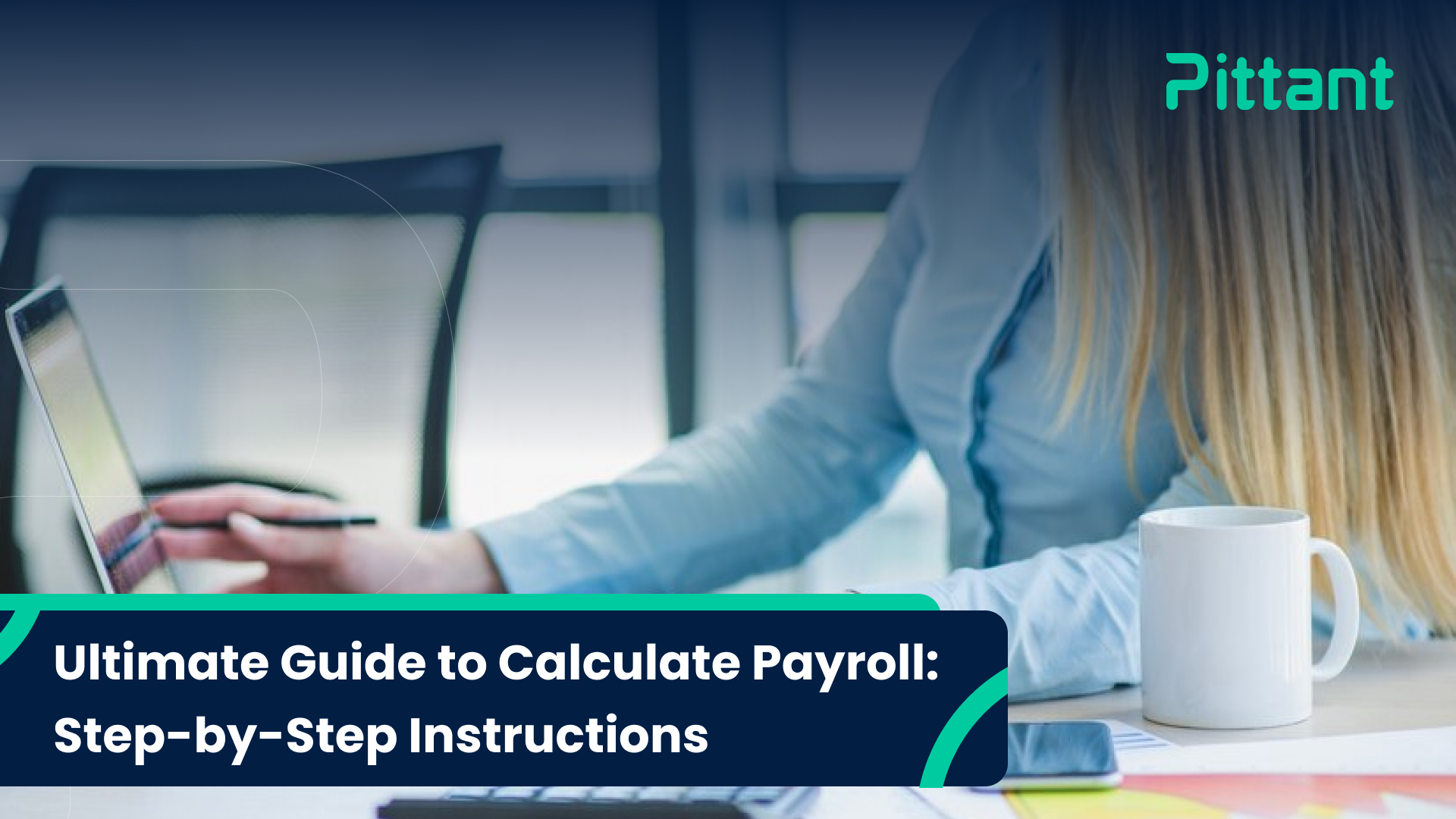Successful management of any company requires an effective strategy for organizing employee attendance and dismissal. A good attendance and departure system enhances the team’s spirit of discipline and ensures compliance with work regulations and objectives. Monitoring employees’ attendance and punctuality also helps improve their efficiency, reduce their absences and tardiness from work, and support their level of productivity to complete the required tasks on time. Attendance and departure can be managed manually, or through technical programs designed to perform this task automatically – it reduces time and effort, provides accuracy and great effectiveness, and facilitates compliance with labor regulations and laws. One of the most important features of attendance management programs is the extent of their integration with other human resources programs that the company relies on to manage salaries , manage vacations , schedule employee shifts, and so on. It becomes easy to follow various operations, organize and calculate working hours, payrolls at the end of each month, and know all information about employees from one place. What are the distinguished attendance management programs? What is its importance in order for the company to reach its goals?
What is meant by attendance management?
It is tracking employees’ working hours – by recording the duration of their physical presence in the work facility, or their presence on the electronic work platform – in the case of working remotely . It is a task carried out by the attendance and leave specialist in the Human Resources Department – whether manually using the attendance and leave book, or spreadsheets, or relying on automated attendance and leave programs that provide daily and monthly reports, record vacations, absences, penalties, and rewards, and manage employees’ total salaries with the click of a button. one.
What is the importance of attendance management?
Attendance management is indispensable in almost any business establishment, as it is concerned with accurately calculating the working hours of all employees, because of its importance in calculating employees’ monthly wages in companies in general – and in companies that adopt the hourly work system in particular. Commitment to working hours is closely linked to the efficiency of employees, their level of productivity, management of their performance in general, and the continuity and success of the work as a whole. Attendance software reports on employees’ arrival and departure times, breaks, vacations, and absences, so it can rate their performance and efficiency relative to their attendance and actual working hours. These programs can also identify any unusual patterns that cause delays or disruptions to work; Thus, it creates an opportunity to discuss these patterns, and provide appropriate assistance and recommendations to overcome them and improve performance. Finally, these programs give you a snapshot of what your employees are doing now. It enhances their sense of seriousness and discipline at work.
Why rely on an attendance management system?
An accurate attendance management system – which relies on cloud solutions in particular – facilitates the task of the human resources management team in organizing working hours. It enables them to follow up on the regularity of employees – regardless of their location or working hours – with the push of a button via a mobile application or electronic platform, and spares them from spending hours managing routine manual attendance and leave data: which supports the productivity of the work team, and gives them opportunities to exploit this time. In more useful tasks for the company. There are many types of electronic attendance and leave management systems that include automatic data entry and collection, and biometric clocks that record attendance and leave using a face or fingerprint. Most companies in the labor market today are trying to adopt attendance and dismissal programs that are flexible, diverse, and integrated – to meet the various requirements of the workforce, and to optimally invest in the company’s human resources .
Types of attendance management systems
There are different types of attendance management systems, such as automated programs, web-based programs, biometric clocks (fingerprint attendance devices), or automated attendance books. These programs should be integrated with leave management programs and payroll management to ensure data accuracy and to calculate the total salary of employees in a simple way. The most important of these types are the following:
- Online attendance management software
Attendance management programs via the Internet are considered a practical, simple to use, and cost-saving solution for organizing attendance and departure, as it only requires logging in to the Internet and installing a program that relies on the network and cloud technology to access data. These programs are usually characterized by the simplicity of their user interface, and provide the following services – more or less, depending on the needs of the company and the program it relies on:
- Record attendance.
- Check-out registration.
- Recording rest hours during the work day.
- Apply for leave.
- vacations balance.
- Attendance policies.
- Status reports.
- Being late for work.
- Early departure from work.
- Fingerprint attendance and departure system
It is a biometric system that allows the attendance and departure of employees from the work facility to be recorded using a face or fingerprint. This system is commonly used in government work establishments due to its accuracy and strictness. However, some technical errors may occur in the identification of fingerprints, or in the connection of fingerprint devices to the network, or other things. However, this system is usually integrated with other human resources management programs , and is considered a low-cost attendance system that is also simple to use, as it allows the list of included employees to be modified and the identification fingerprint of each of them easily at any time.
- Rest tracking software
Organizing break times can be a problem for some companies – even if they rely on an electronic attendance management system. Therefore, these companies may resort to a separate program to accurately record rest periods – several times during one working day, where the first login is considered a registration of attendance, and any other registrations – entering and leaving during official work hours – are considered rest periods for the employee.
Understanding the different types of attendance management software, and the advantages and disadvantages of each, will help you choose the system that offers the greatest effectiveness and flexibility, and finally abandon traditional methods.
Some important elements and definitions in the attendance management system
All attendance management programs have the following elements in common:
- Definition of “absenteeism from work”
The term absence usually refers to the employee’s failure to attend the workplace – whether due to taking leave, or due to a fortuitous event such as illness, travel, etc. The attendance and departure system should clearly differentiate between types of absences – whether they are authorized in advance or not, as non-agreed absences affect the company’s workflow and make the employee vulnerable to financial penalties and deduction from the monthly salary.
- Mechanism for reporting work absences
The manager can obtain employee absence reports through system records that differentiate between paid and unpaid leave for each employee. Absence reports are important for monitoring employee performance, their individual successes, and addressing problems that hinder their productivity.
- Key terms: validly excused absence/unexcused absence/verifying reasons for absence
- Absence with a valid excuse: It is the employee’s inability to attend work as a result of a compelling reason that does not deserve blame, but this does not prevent the employer from setting specific expectations for absences and taking corrective measures regarding their recurrence.
- Unexcused absence: It is the repeated inability of an employee to attend work without providing real, proven reasons for this, which makes the employer entitled to take more serious measures such as imposing financial penalties, or terminating the employee’s contract.
- Verifying the reasons for absence: This is an important step before taking any action, as every employer has the right to be fully informed of the reason for the employee’s absence – with proof of it if possible, and of any modifications or restrictions that prevent the employee from meeting the employer’s expectations of continuous attendance at the facility during working hours. decided.
- Protecting employee privacy
The employee has the full right to request leave from the employer when necessary – without fear of losing his job – in accordance with human rights laws . Under these laws, the employer is obligated to provide a space in which the employee can do so safely, while protecting his privacy regarding the reasons that forced him to request leave. The absence of this commitment may expose the company to judicial violations, discrimination lawsuits, and administrative abuse.
- Login requirements
A term that refers to the minimum standards an employee must meet to be considered present during a day or shift. These standards can be set by working a certain number of hours, or working during a specific time period per day. These criteria are relied upon to determine whether an employee is entitled to wages for the specific day of work, or to be recorded as absent from work, and they can be modified according to the policies and needs of each company.
Advantages of attendance management systems
There are many advantages of attendance management software that can benefit your company when you invest in a reliable, proven system that is suitable for the goals that the company hopes to achieve by implementing it, such as:
Achieving Accuracy And Reducing Material Losses
Errors in accurately recording employee attendance and absence can cost the company significant financial losses, especially with regard to managing working hours and payroll. According to a Wagepoint study , about 80% of manual employee hour and attendance records need to be reviewed and corrected. While companies that rely on an automated system to manage attendance and leave reduce potential errors by 44% .
Ensure Compliance With Labor Policies And Laws
Work laws and obligations differ from one organization to another, and between countries, and it is sometimes difficult for human resources officials to know the differences and small details related to these laws. Therefore, it is beneficial to rely on a system prepared in advance to comply with the country’s labor laws related to working hours, overtime, vacation law, unpaid leave, and so on. Taking into account the conditions stipulated in employees’ employment contracts without favoritism, discrimination, or allowing errors to occur. Ensuring compliance with legal business policies helps avoid violations, lawsuits, and fines, and gives the company a positive reputation in the marketplace.
Easier Vacation Tracking
Manually tracking and calculating employee leave can be daunting for HR administrators – especially in companies with large workforces, where they must differentiate between sick leave, paid leave, unpaid leave, and more. The automated attendance management system coordinates this easily and accurately.
Reducing Circumvention Of Attendance And Departure Policies
The employee needs to log in or out with his personal password – in the electronic systems, or with his own fingerprint – in the fingerprint attendance system. These are methods that require the employee himself to do this; This reduces the chances of fraud or evasion of work.
Scheduling Shifts In Advance
One of the most important features of attendance management systems is the ability to schedule vacations and organize working hours in a way that facilitates the process of planning and managing projects. This reduces the need for human resources officials to spend significant amounts of time reviewing requests sent via e-mail, letters, or submitted by employees themselves, and prevents the possibility of losing information, files, and documents that may cause conflicts in the work environment and prevent progress.
Provide Complete Flexibility
Some companies are adopting options for working from home, or remotely, and may allow other work models such as freelance work, hourly work, flexible shift systems, or others. The attendance and leave management system helps coordinate all forms of contracting, ensures that each employee’s attendance hours are recorded, and his wages are calculated – as required.
Pittant solutions for attendance management system and employee shift scheduling
Attendance management feature in the Pittant system
It is a feature that allows employees to follow up on their commitment to their specified working hours during the day and month, as the employee can record attendance and departure through the Pittant attendance and departure system via mobile phone – or via electronic fingerprint – easily and accurately. The Pittant platform links attendance and leave information with the schedule of shifts and vacations so that human resources managers can view all the data in one place. It is also linked to payrolls and updates them automatically without manual entry. The platform also supports flexible attendance policies for hybrid work , in order to record employees’ working hours if they commit to working outside the facility – according to the schedule.
The advantage of scheduling employee shifts in the Pittant system
The feature allows you to prepare a schedule with the dates and places of work for each employee during the month, and automatically link it to the attendance and departure system to monitor the movement of employees and their commitment to the specified working hours. The feature of scheduling work shifts on the Pittant platform is characterized by the ability to allocate the types of shifts for each employee individually – according to the location, type of shift, or required job – with the ability to modify or switch between them when needed.
What is the difference between an integrated system and a separate human resources management system?
The integrated system – Pittant – provides comprehensive automation of human resources processes to control and manage them from one place, which is the Pittant application. It is suitable for all Saudi establishments – large ones in particular, as it relieves officials from manual calculations and data entry, prevents incoming errors, and gives employees a smooth work experience. And comfortable. While the separate system specializes in providing only one feature of the human resources system, such as the Onpay platform , which specializes in managing salaries, or the leavedates platform , which deals with employee leave management, and others.
What qualities of HR software are you looking for?
Implementing a new human resources system represents a challenge for some companies at first, as it involves changes in some workflow mechanisms, the necessity of training employees to use the new system, and so on. Therefore, there are a number of points that must be taken into consideration when choosing the new system to facilitate the transitional phase and succeed in implementing it, such as:
- System integration with existing systems:
If your company already uses some separate systems — which you don’t want to replace or replace — you need a system that works with them without conflict.
- Easy setup:
To shorten the time required to start working on the system and to facilitate the task of training employees on it.
- Compatibility of the system with the country’s labor system regulations:
To ensure compliance, avoid disruption, and any violations or fines that may occur due to conflicting labor provisions and laws. For example : The Pittant system is compatible with the regulations and provisions of the labor system in the Kingdom of Saudi Arabia.
- Investment Advantage:
It is carefully studying the budget for implementing the human resources system, and making sure that the benefits of this particular program are what you are looking to implement in your company, and that its implementation will financially benefit the company in all respects.
a summary
Attendance management is a major focus in human resources work tasks, and technical systems provide advanced solutions to automate attendance and leave tracking, reduce incoming errors, and improve efficiency. It also helps establishments remain in a sound legal position and avoid violations and lawsuits. Finally, the company may benefit from relying on a strong, reliable attendance and departure system in simplifying most of the cumbersome processes and accelerating the progress towards achieving its goals.



